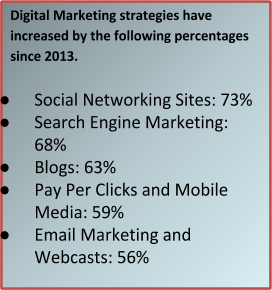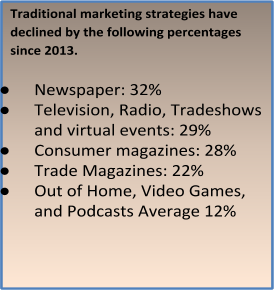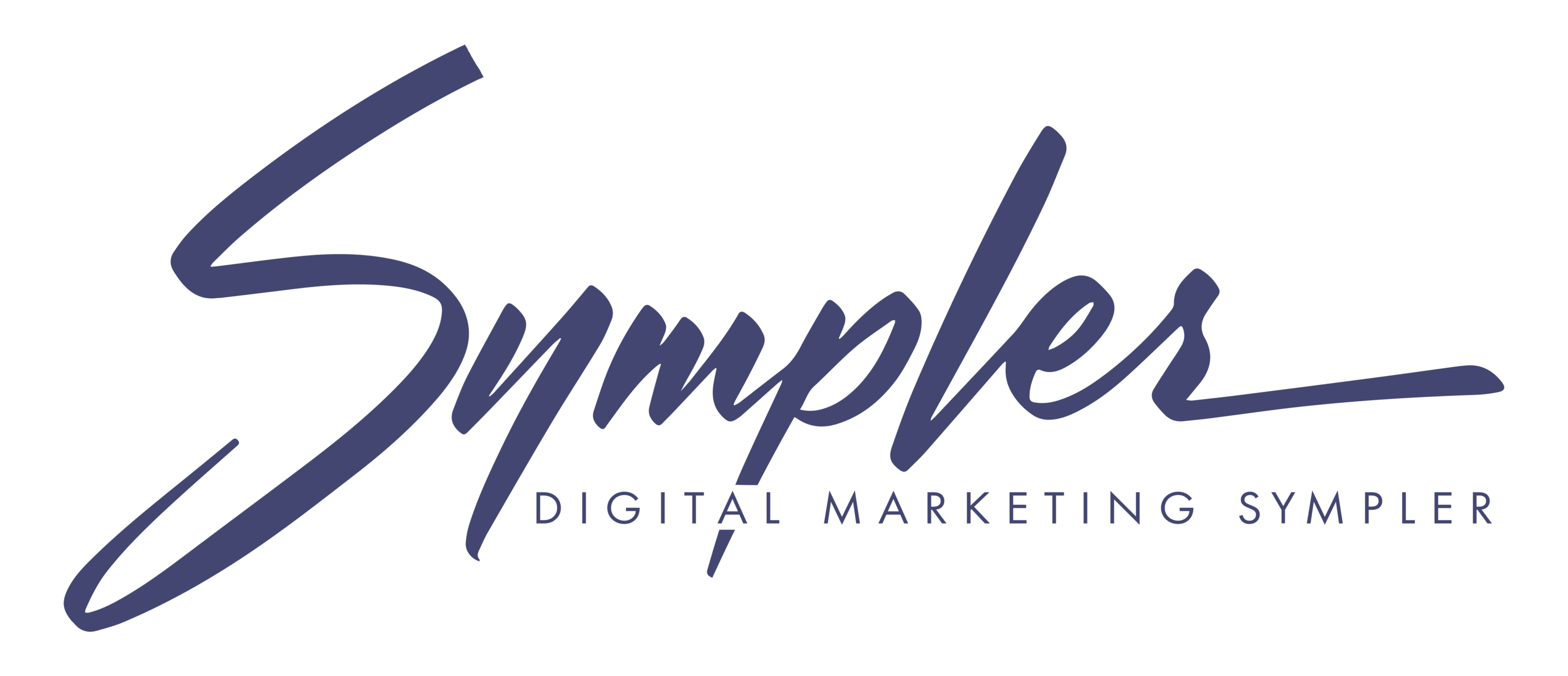 Marketing and advertising have been used for centuries and have evolved dramatically in the past decade. Traditional marketing strategies include newspaper, magazines, direct mail, television, radio, billboards, and other signage. These methods introduce a brand to potential customers and rely on a customer’s curiosity to respond. Since responses vary by audience demographic, creating individual campaigns, implementing, distributing, and testing them can be very expensive. The costs for these traditional methods include development, production, labor, and distribution which all involve significant investments.
Marketing and advertising have been used for centuries and have evolved dramatically in the past decade. Traditional marketing strategies include newspaper, magazines, direct mail, television, radio, billboards, and other signage. These methods introduce a brand to potential customers and rely on a customer’s curiosity to respond. Since responses vary by audience demographic, creating individual campaigns, implementing, distributing, and testing them can be very expensive. The costs for these traditional methods include development, production, labor, and distribution which all involve significant investments.
Radio and television ads are known to cost between thousands and millions of dollars depending on time slots. Printing and paper costs for print methods add up fast and have to be delivered. Billboards are extremely costly considering the quick glimpse consumers get as they drive by and the blight they impose on the landscape.
A major downside to all of these methods is the difficulty, if not the inability, to measure their impact. Mistakes with messaging, the choice of marketing material, and venue can have a significant financial impact.
Methods like radio and print ads are used in specific cities or regions only. They don’t scale to larger geographical or global areas because costs for each location and campaign keep adding more costs. Audiences are inundated with repetitive messages for things that are not relevant to them and mountains of paper waste for products they don’t want or need.
Digital marketing is often the easiest and least expensive way to reach your target audience. Whether your reach is local or global, qualified consumers can be reached anywhere.
Digital media is flexible by offering a mix of website content, email, and downloadable electronic files for consumers who want to touch, read, and save the material for future use.
Digital Marketing vs Traditional Marketing
| Digital Marketing | Traditional Marketing |
|
|
Digital marketing is accessible to everyone and every brand. Smartphones and portable computers are pervasive. Through social media platforms, a message can become a viral sensation. Each message can be personalized to target groups or a single individual. Adding blog articles to websites educates clients to form a trusted relationship that encourages consumers to inquire about more information without pressure to buy. Sales can result out of simple client gratitude. You will always know when a campaign is headed in the right direction because results can be easily measured and tracked.
Current Marketing Trends


Based on marketing trends, most businesses agree that digital marketing makes sense. Sympler has a vast array of digital tools that are efficient, highly targeted, and backed by data and analysis to make real-time changes to any campaign at any given time. Costs for services are minimal in comparison to traditional techniques.

